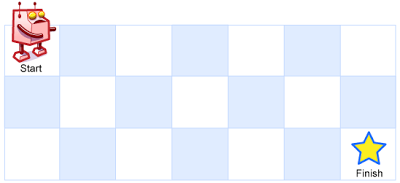1.题目描述
A robot is located at the top-left corner of a m x n grid (marked ‘Start’ in the diagram below).
The robot can only move either down or right at any point in time. The robot is trying to reach the bottom-right corner of the grid (marked ‘Finish’ in the diagram below).
Now consider if some obstacles are added to the grids. How many unique paths would there be?
一个机器人位于一个 m x n 网格的左上角 (起始点在下图中标记为“Start” )。
机器人每次只能向下或者向右移动一步。机器人试图达到网格的右下角(在下图中标记为“Finish”)。
现在考虑网格中有障碍物。那么从左上角到右下角将会有多少条不同的路径?

An obstacle and empty space is marked as 1 and 0 respectively in the grid.
网格中的障碍物和空位置分别用 1 和 0 来表示。
Note: m and n will be at most 100.
Example 1:
Input:
[
[0,0,0],
[0,1,0],
[0,0,0]
]
Output: 2
Explanation:
There is one obstacle in the middle of the 3x3 grid above.
There are two ways to reach the bottom-right corner:
- Right -> Right -> Down -> Down
- Down -> Down -> Right -> Right
2.Solutions
This is a typical 2D DP problem, we can store value in 2D DP array, but since we only need to use value at dp[i-1][j] and dp[i][j-1] to update dp[i][j], we don’t need to store the whole 2D table, but instead store value in an 1D array, and update data by using dp[j] = dp[j] + dp[j - 1] (where here dp[j] corresponding to the dp[i - 1][j]) and dp[j - 1] corresponding to the dp[i][j - 1] in the 2D array)
1 | public int uniquePathsWithObstacles(int[][] obstacleGrid) { |
dp[j] += dp[j - 1];
isdp[j] = dp[j] + dp[j - 1];
which is new dp[j] = old dp[j] + dp[j-1]
which is current cell = top cell + left cell

